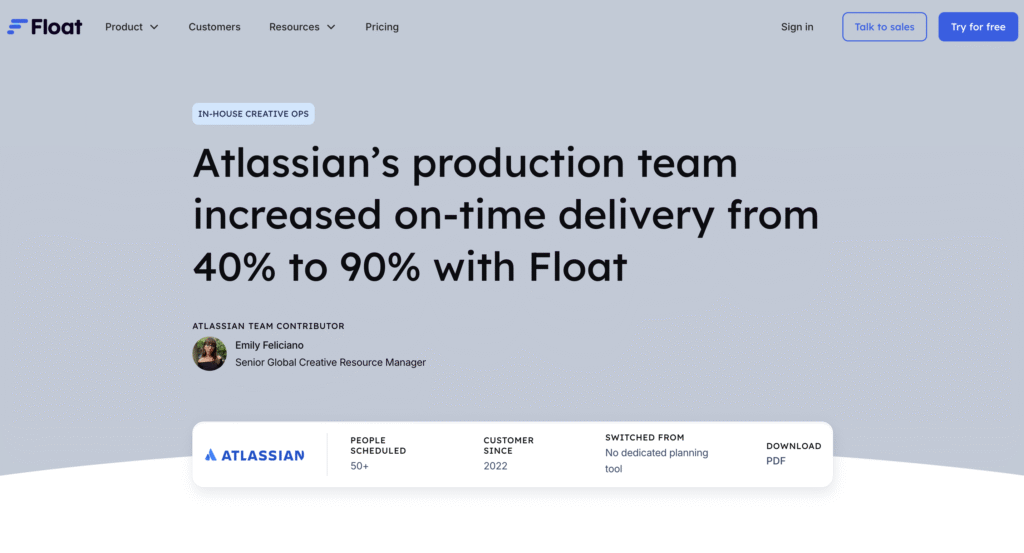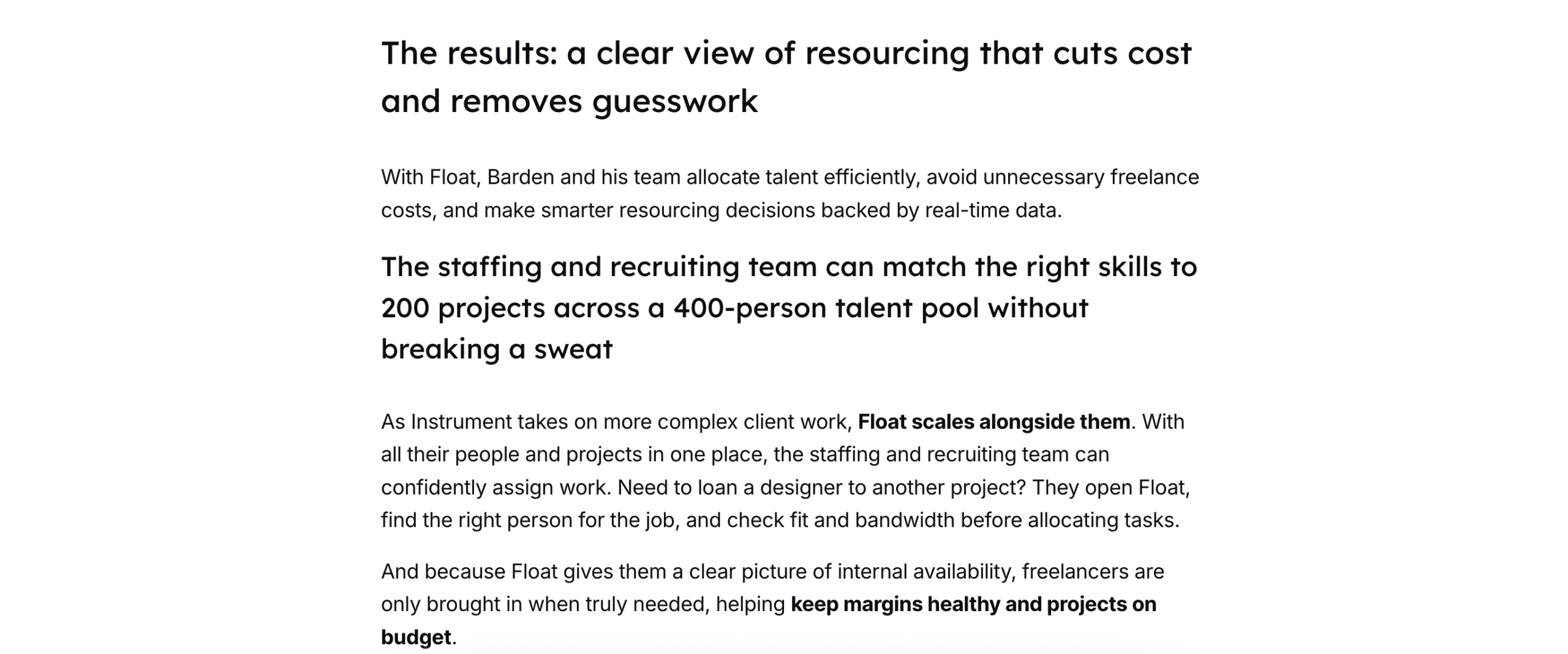Get in touch
- stellainabo@gmail.com
Success Message
How 12 high-impact case studies drive conversions and fuel content for Float

TL;DR
Float’s customer stories were outdated and needed a refresh. I ran 12 case study calls with customers and created case studies that showed the product’s value. These case studies now help Float close sales deals and fuel new content assets.
Float.com is a resource management tool used by 4,500+ teams like Atlassian, Scholz & Friends, WPP, and Instrument.
The “Who Uses Float?” section has not been updated since 2020, and it was siloed from existing sales and marketing materials.
Working with the sales, marketing, and customer success teams, I created a list of customers to contact.
I created outreach, follow-up, and instruction templates to reduce the time spent contacting people.
I kept a record of the customers I contacted, with the contact’s name, role, company, status, and notes/comments in Notion. In total, I contacted about 50 people, 12 of whom booked a call.
I collated questions to help me understand the customer’s state before Float, focusing on their buying triggers. I also had questions targeted at the discovery and trial process. There were specific queries about the results after making the switch.
The set-up for the call was simple. Interviews were recorded on Zoom. I also used a tool called Marvin to ensure we had a backup video.
Instead of trying to stick to the script, I let curiosity lead the way, and it helped me uncover some interesting angles.
I rewatched the interview recording several times, trying to find the angle.
For a majority of them, I followed this structure:

Four existing case studies existed prior to this project, one of which was discontinued because the customer had switched to a different tool.
The update process included: